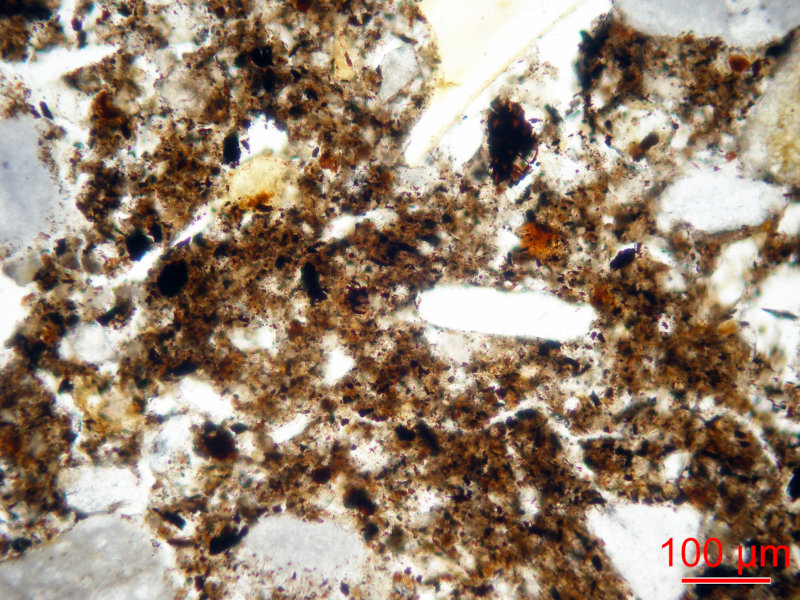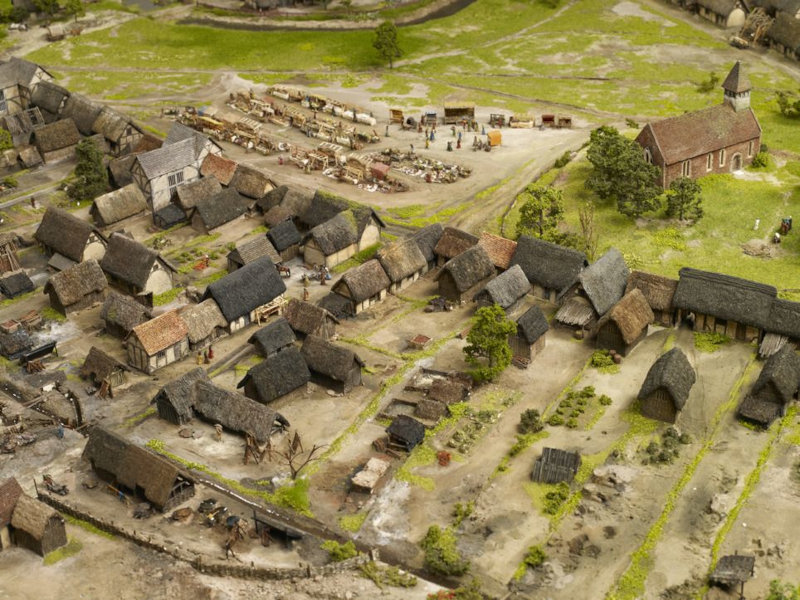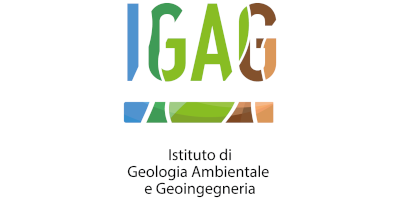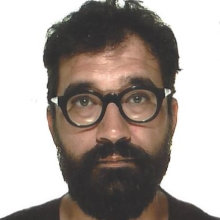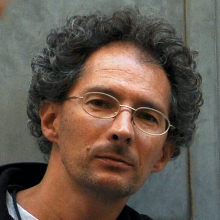INSIDE
The Intimate Structure of the Italian Dark Earths
About
The Intimate Structure of the Italian Dark Earths: Environmental, Climatic and Anthropogenic Factors that Induce the Formation of the post-Roman Anthrosols
Dark Earths are urban stratigraphic soils found in many European cities with Roman past. It is a homogeneous deposit that occurs above Roman levels and encompasses the so-called Dark Ages. The questions about the formation of this horizons and their human and environmental significance are still unsolved.
The approach conventionally employed in the study of dark earths in the archaeological, historical and environmental contexts of the Dark Ages is generally centered on the investigation of macro residues and deposits. Here, the use of organic biomarkers in conjunction with the structural analysis of the charred material will lead to a more robust reconstruction of the urbanization process that took place after the decline of the Roman Empire.
In particular, the systematic use of source specific biomarkers as paleoproxies to investigate the processes related to human activities that may have played a role in the formation of the dark earths. Through this approach the aim of the project is to find a novel explanation for the formation of the Italian dark earth that relies on the interaction between environmental, climatic and anthropogenic factors.
Tasks
TASK 1: Soil micromorphology
The first task will be focused on analysis of soil micromorphology of thin section of the whole soil components and the soil fabric in high detail.
This task focuses also on the extended analysis of the palynological assemblages retrieved from the dark earth samples from northern Italy for the extraction of pollen, spores, pollen-slide charcoal fragments and other microbiological particles useful for the interpretation of the original samples.
This task will lay the foundations for all the further tasks of the project.
TASK 2: Charred material and organic carbon
This task is focused on the development and validation of protocols for the quantitative determination of the different forms of carbon in soil (organic, inorganic and black carbon), specifically designed for dark earth matrices. The charred fraction is a key element to understand the origin and formation of the dark earths.
In order to distinguish the different forms of carbon, the first thing to do is to determine the amount of the organic fraction with respect to the total amount of elemental carbon. Elemental Analyzer (EA) can be used for the determination of the total elemental carbon, carbonates and the organic carbon (OC). Further information on the carbonaceous fraction can be obtained from the structure of the graphitic carbon by using Raman Spectroscopy.
As it has been demonstrated in several papers (Jorio et al. 2012), Raman spectroscopy is able to elucidate the graphite amorphization process that characterized the carbon structure.
TASK 3: Biomarkers
The focus of this task is the determination and improvement of the existing analytical methods, where required, for the determination of the key biomarkers previously individuated in the methodological section (fecal sterols, miliacin, phenolic compounds and lignin composition, monosaccharide anhydrides and untarget analysis).
The analysis at molecular level through the determination of source specific biomarkers in dark earth has only partially been attempted by Nicosia et al. 2018. However, the use of source specific biomarkers is a highly promising approach for reconstructing paleoclimatic and paleoenvironmental dynamics in conjunction with past anthropogenic activities as it has been demonstrated even by Dr. Battistel in several papers (Battistel et al. 2018 and 2017).
Deregulated waste management has been invoked to explain the formation process of dark earths. If true, a large amount of faecal input is expected. Faecal biomarkers and the derived faecal indexes are the key point to evaluate this hypothesis.
The second hypothesis argues that wood degradation is the main contribution to the formation of dark earth, due to the decay of insubstantial buildings (i.e. huts, temporary shelters, etc.). To confirm or reject this hypothesis the principal class of biomarkers to be studied are the phenolic degradation products of the lignin (Datta et al. 2017, Thevenot et al. 2010). The manured horticultural soils hypothesis asserts that the ruralisation of cities following Roman decline, and subsequent change in agricultural practices and animal herding played an important role in the formation of dark earths. Detailed agricultural activities can be inferred from the analysis of the molecular constituent of the organic fraction, by soil micromorphology and by the palynological investigation of pollen and non-pollen palynomorphs macrofossils contained in the soil.
The presence of biochar will be supported by the chemical determination of burning chemical products such as polycyclic aromatic hydrocarbons (PAHs) and monosaccharide anhydrides (MAs). MAs can also be used to determine what kind of biomass was burned: specific ratios can be used to distinguish grass from softwood and hardwood fires (Simoneit et al. 2002).
TASK 4: Climate
This task is focused on the use of the existing records available for reconstructing the climate condition at a more local/regional scale in the time window of the formation of the dark earth. In order to properly set the time window, we aim to constrain the dark earth unit formation by radiocarbon dating.
Furthermore, we will date macrofossils inside the unit in order to ascertain the accretion rate. In order to have a complete picture of this horizon, radiocarbon dating of the humic substances will be also performed.
As the instrumentation required is not available, we will contract out these analyses to a company that has the expertise in radiocarbon dating.
TASK 5: Archaeological Context
The reconstruction of the archaeological context is crucial to characterize the formation of the dark earths in the study area. The archaeological context will be gathered from:
- field stratigraphy as observed and described during excavation
- historical accounts, written sources, historical maps
- other information deriving from the study of archaeological structures (i.e. their use and building technique) and of finds such as pottery, metal, etc.
The data obtained by the multiproxy analyses described in this proposal will need to be contrasted against the archaeological evidence in order to produce a reconstruction of the human and natural history in the sampled locales. More broadly, the evidence from each single site will need to be combined in a broader framework, which will allow us to produce a robust model for the formation of dark earth throughout Europe in a broader palaeo-environmental context and strengthen the contribution of scientific techniques in solving archaeological questions, with special emphasis on that of organic chemistry / GC/MS analyses on archaeological soils and sediments (as opposed to archaeological objects).
The identification of recurrent patterns of formation which can be used to reconstruct human and natural processes in deposits of different time periods (i.e., cultural or occupation layers, anthropic deposits, sols d’habitation, Anthrosols and Technosols) will be a significant clue.
References
List of referecences
- Y. Devos et al., An integrated study of Dark Earth from the alluvial valley of the Senne river (Brussels, Belgium), Quaternary International, 460 (2017) 175-197
- C. Nicosia et al. Heart of darkness: an interdisciplinary investigation of the urban anthropic deposits of the Baptistery of Padua (Italy), Archaeological and Anthropological Sciences, 2018
- C. Nicosia and Y. Devos, Urban Dark Earth. In Smith C (ed) Encyclopedia of global archaeology, vol. 11 Springer, New York, pp 7532-7540, 2014
- J. Ribeiro-Soares et al. The use of Raman spectroscopy to characterize the carbon materials found in Amazonian anthrosols, J. Raman Spectroscopy, 44, 2013, 283-289
- S. McLeod, Studies on wet oxidation procedures for the determination of organic carbon in soils. CSIRO Division of Soils, Notes on Soil Techniques, pp. 73-79
- Jorio et al. Microscopy and spectroscopy analysis of carbon nanostructures in highly fertile Amazonian anthrosoils. Soil and Tillage Research 122 (2012) 61-66
- G.C. Lodi, L. De Ferri, G. Pojana, Spectroscopic characterization of historical building materials: The case study of the Biblioteca Nazionale Marciana (Venice, Italy) in JOURNAL OF RAMAN SPECTROSCOPY, vol. 49, pp. 351-361 (ISSN 0377-0486) 2018
- L. de Ferri, F. Mazzini, D. Vallotto, G. Pojana. In situ non-invasive characterization of pigments and alteration products on the masonry altar of S. Maria ad Undas (Idro, Italy). 2017. Archaeol Anthropol Sci
- K. A. Jensen, G. Pojana, D. Bilaničová. Cap. 4 - Characterization of Manufactured Nanomaterials, Dispersion, and Exposure for Toxicological Testing. 2014. In Nanotoxicology: Progress toward Nanomedicine, Second Edition, CRC Press, 45-74. Eds. N. A. Monteiro-Riviere, C. L. Tran.A
- Brunelli, G. Pojana, S. Callegaro, A Marcomini. 2013. Agglomeration and sedimentation of titanium dioxide nanoparticles (n-TiO2) in synthetic and real waters. Journal of NanoparticleResearch, 15, 1-10
- S. Zuin, S. Gottardo, G. Pojana, A. Critto, L. Tran, A. Marcomini. 2011. Environmental fate and effect of engineered nanoparticles: state of the art and research need for risk assessment. Nova Science Publishers, Inc.
- D. Battistel et al., GC-MS method for determining faecal sterols as biomarkers of human and pastoral animal presence in freshwater sediments in ANALYTICAL AND BIOANALYTICAL CHEMISTRY, vol. 407, pp. 8505-8514 (ISSN 1618-2642) 2015
- D. Battistel et al., Fire and human record at Lake Victoria, East Africa, during the Early Iron Age: Did humans or climate cause massive ecosystem changes?, The Holocene, 27 (2017) 997-1007 doi10.1177/0959683616678466
- D. Battistel, N.M. Kehrwald, P. Zennaro, G. Pellegrino, E. Barbaro, R. Zangrando, X.X. Pedeli, C. Varin, A. Spolaor, P.T. Vallelonga, A. Gambaro, C. Barbante High-latitude Southern Hemisphere fire history during the mid- to late Holocene (6000–750 BP), Clim. Past, 14, 871-886, 2018
- E. Argiriadis, D. Battistel, D. McWethy, M. Vecchiato, T. Kirchgeorg, N. Kehrwald, C. Whitlock, J. Wilmshurst, C. Barbante, Disentangling anthropogenic from natural fires: biomarkers provide direct evidence for prehistoric human lit fires in New Zealand. Scientific Reports, (2018), 8:12113
- Leeming et al. Novel use of faecal sterols to assess human faecal contamination in Antarctica: a likelihood assessment matrix for environmental monitoring, Antarctic Science, 27 (2015) 31-43
- Min et al. The Regulation by Phenolic Compounds of Soil Organic Matter Dynamics under a Changing Environment, BioMed Research International Volume 2015, Article ID 825098, 11 pages
- Simoneit BRT (2002) Biomass burning – A review of organic tracers for smoke from incomplete combustion. Applied Geochemistry 17: 129–162
- Kirchgeorg T, Schupbach S, Kehrwald N et al. (2014) Method for the determination of specific molecular markers of biomass burning in lake sediments. Organic Geochemistry 71: 1–6
- G. Motuzaite-Matuzeviciute et al. Miliacin in palaeosols from an Early Iron Age in Ukraine reveal in situ cultivation of broomcorn millet, Archaeol Anthropol Sci (2016) 8:43–50 DOI 10.1007/s12520-013-0142-7
- A. Callegaro, F.M. Pereira, D. Battistel, N.M. Kehrwald, B.W. Bird, T. Kirchgeorg, C. Barbante, Fire, vegetation and Holocene climate in the south-eastern Tibetan Plateau: a multi-biomarker reconstruction from Paru Co, Climate of the Past, in press
- M. Feltracco, E. Barbaro, D. Contini, R. Zangrando, G. Toscano, D. Battistel, C. Barbante, A.
- Gambaro, Photo-oxidation products of α-pinene in coarse, fine and ultrafine aerosol: A new high sensitive HPLC-MS/MS method, Atmospheric Environment 180 (2018) 149–155
- R. Datta et al. Enzymatic Degradation of Lignin in Soil: A Review, Sustainability 2017, 9, 1163; doi:10.3390/su9071163 15
- D. McWethy et al. Rapid landscape transformation in South Island, New Zealand, following initial Polynesian settlement, PNAS, (2010) 107 (50) 21343-21348
- R. Zangrando et al. Molecular markers of biomass burning in arctic aerosols., Environmental Science and Technology, 47(15):8565-74. doi: 10.1021/es400125r
- U. Büntgen et al. 2500 years of European climate variability and human susceptibility, Science, 331, 2011, 578. Doi: 10.1126/science1197175
- J. Howard, Anthropogenic Soils, Progress in Soil Science, 2017 DOI 10.1007/978-3-319-54331-4_1
- R.I. Macphail et al. A future for Dark Earth?, Antiquity, 77, 2003, 349-358
- R.I. Macphail et al. Archaeological materials. In: Stoops G., Marcellino V., Mees, F. (Eds) Interpretation of micromorphological features of soil and regoliths, Elsevier, Amsterdam pp. 589-622
- J. Ribeiro-Soares et al. The use of Raman spectroscopy to characterize the carbon materials found in Amazonian anthrosols, J. Raman Spectroscopy, 44, 2013, 283-289
- Devos Y., Nicosia C., Vrydaghs L. & Modrie S. 2013. Studying urban stratigraphy: Dark Earth and a microstratified sequence on the site of the Court of Hoogstraeten (Brussels, Belgium). Integrating archaeopedology and phytolith analysis. Quaternary International 315, 147-166
- Devos, Y., Nicosia, C., Vrydaghs, L. et al. (2016) An integrated study of Dark Earth from the alluvial valley of the Senne river (Brussels, Belgium). Quaternary International (2016)
- Nicosia C. (2018) Geoarcheologia delle stratificazioni urbane post-classiche. Antenor Quaderni Vol. 45 (book series). Quasar Edizioni, Rome
- Otto A. and Simpson M.J. Evaluation of CuO oxidation parameters for determining the source and stage of lignin degradation in soil. Biogeochemistry (2006) 80:121-142
- Thevenot M. et al. Fate of lignins in soils: a review. Soil Biology and Biochemistry (2010) 42: 1200-121

